
Savai'i: The Untouched Gem of Samoa
Discover Savai'i, Samoa's largest and most pristine island, where lush rainforests, stunning beaches, and rich cultural heritage create an unforgettable travel experience.
Savai'i, the largest island in Samoa, is a true paradise for travelers seeking unspoiled natural beauty and rich cultural experiences. Known for its stunning landscapes, Savai'i features lush rainforests, pristine beaches, and crystal-clear waters perfect for relaxation and adventure. The island's volcanic origins are evident in its rugged terrain, with dramatic cliffs and lava fields creating a breathtaking backdrop for exploration. Savai'i is home to several traditional Samoan villages, where visitors can immerse themselves in the local culture and learn about age-old customs and traditions. The island offers a unique opportunity to experience the Samoan way of life, from its vibrant dance and music to its delicious cuisine and warm hospitality. The Fa'a Samoa, or the Samoan way, is deeply ingrained in the island's daily life, making Savai'i a truly authentic destination. For nature enthusiasts, Savai'i boasts a wealth of outdoor activities, including hiking through rainforest trails, exploring the Alofaaga Blowholes, and snorkeling in the colorful coral reefs. The island's diverse wildlife, including exotic birds and marine life, adds to its allure. Whether you're seeking adventure or tranquility, Savai'i offers a perfect balance of both, making it an ideal destination for all types of travelers.
Local tips in Savai'i
- Bring cash, as ATMs are limited on the island.
- Respect local customs and dress modestly when visiting villages.
- Rent a car to explore the island's remote areas at your own pace.
- Try traditional Samoan dishes, especially Oka and Umu.
- Visit the Alofaaga Blowholes during high tide for the best experience.
Savai'i: The Untouched Gem of Samoa
Savai'i, the largest island in Samoa, is a true paradise for travelers seeking unspoiled natural beauty and rich cultural experiences. Known for its stunning landscapes, Savai'i features lush rainforests, pristine beaches, and crystal-clear waters perfect for relaxation and adventure. The island's volcanic origins are evident in its rugged terrain, with dramatic cliffs and lava fields creating a breathtaking backdrop for exploration. Savai'i is home to several traditional Samoan villages, where visitors can immerse themselves in the local culture and learn about age-old customs and traditions. The island offers a unique opportunity to experience the Samoan way of life, from its vibrant dance and music to its delicious cuisine and warm hospitality. The Fa'a Samoa, or the Samoan way, is deeply ingrained in the island's daily life, making Savai'i a truly authentic destination. For nature enthusiasts, Savai'i boasts a wealth of outdoor activities, including hiking through rainforest trails, exploring the Alofaaga Blowholes, and snorkeling in the colorful coral reefs. The island's diverse wildlife, including exotic birds and marine life, adds to its allure. Whether you're seeking adventure or tranquility, Savai'i offers a perfect balance of both, making it an ideal destination for all types of travelers.
When is the best time to go to Savai'i?
Iconic landmarks you can’t miss
Le Lagoto Resort & Spa
Discover Le Lagoto Resort & Spa, a serene and luxurious paradise on Savai'i, offering breathtaking views, exquisite dining, and unforgettable experiences.

Afu Aau Waterfalls
Discover the serene beauty of Afu Aau Waterfalls in Vailoa, Samoa - a breathtaking natural attraction with stunning cascades and lush surroundings.
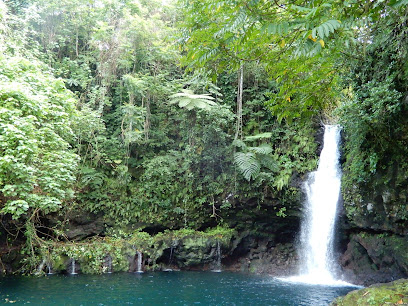
Amoa Resort Savaii
Experience the beauty of Savaii at Amoa Resort, where tropical relaxation meets local culture in a stunning beachfront setting.
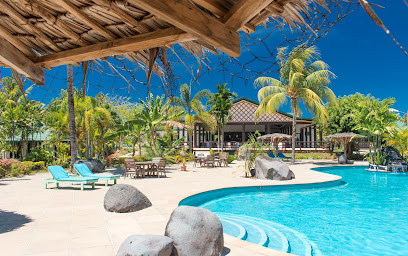
Alofaaga Blowholes
Experience the awe-inspiring power of nature at Alofaaga Blowholes in Taga Salega, Samoa, where seawater erupts dramatically through volcanic rock.
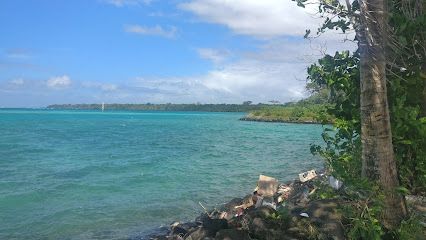
Lauiula Beach Fales
Discover the serenity of Lauiula Beach Fales, your gateway to Samoan culture and breathtaking beachfront views in Salelologa.

Savaii Lagoon Resort
Experience the serene beauty of Savaii Lagoon Resort, a peaceful oasis with stunning views, delicious dining, and comfortable accommodations for the perfect getaway.
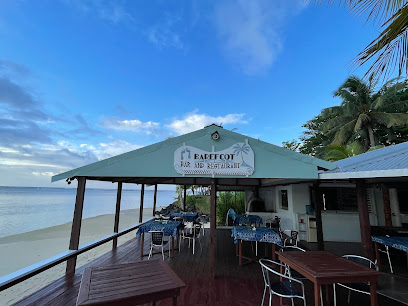
Swimming With Turtles
Swim with majestic sea turtles in Sato'alepai's stunning waters, creating unforgettable memories amidst vibrant marine life.

Va-i-moana Seaside Lodge
Discover the serene beauty of Va-i-moana Seaside Lodge in Auala, Samoa, a perfect retreat for travelers seeking tranquility and cultural immersion.
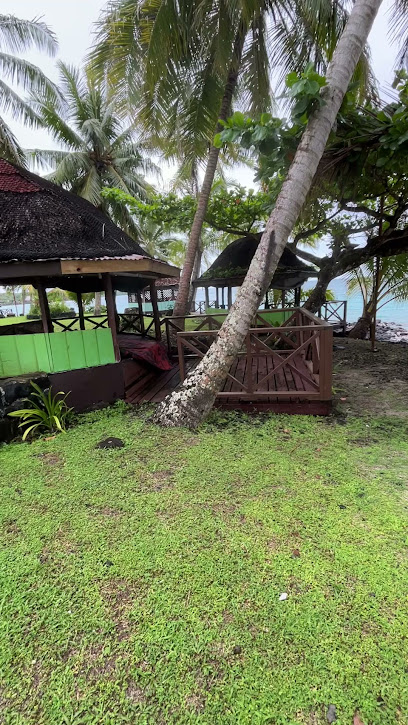
Dive Savaii
Discover the underwater wonders of Savaii Island at Dive Savaii, where vibrant marine life and stunning coral reefs await every diving enthusiast.
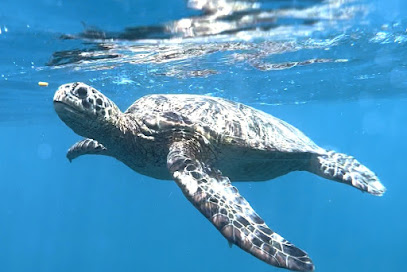
Savai'i Harbourside Café & Pizza Bar
Experience the flavors of Savai'i at Harbourside Café & Pizza Bar, an inviting spot for delicious pizzas and local dishes with stunning harbor views.
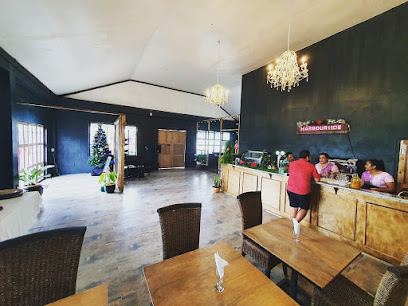
Florence's Place
Discover the charm of Savaii at Florence's Place, a cozy bed & breakfast offering warm hospitality and local flavors in a serene tropical setting.
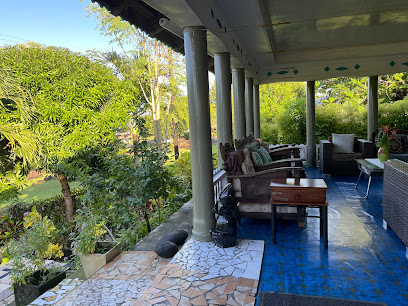
Jet Over Hotel
Experience the essence of Savaii at Jet Over Hotel, where comfort meets island charm amidst stunning landscapes and vibrant culture.

Salelologa Wharf
Experience the vibrant life and breathtaking beauty of Savaii at Salelologa Wharf, the main gateway to Samoa’s stunning landscapes and rich culture.
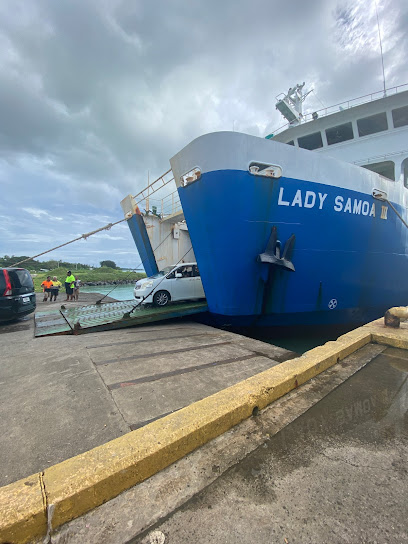
Cape Fatuosofia
Explore the breathtaking landscapes and serene beauty of Cape Fatuosofia, a hidden gem in Samoa perfect for adventure and relaxation.
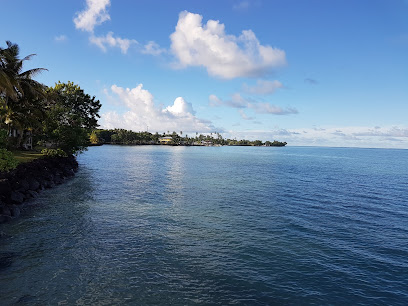
Mu Pagoa Waterfall
Experience the breathtaking beauty of Mu Pagoa Waterfall, a hidden gem in Puleia, Samoa, where nature meets tranquility and adventure.
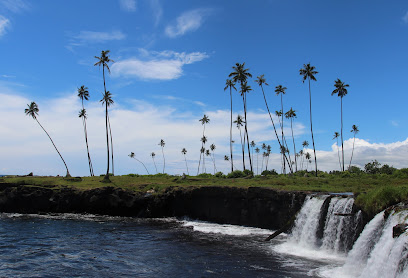
Unmissable attractions to see
Robert Louis Stevenson Museum
Explore the enchanting Robert Louis Stevenson Museum in Samoa, where literary history and tropical beauty intertwine for an unforgettable experience.
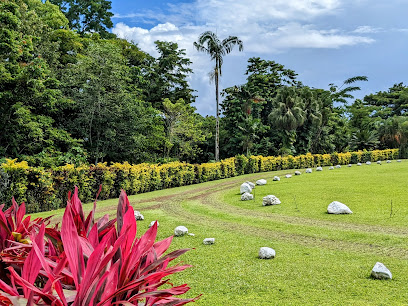
Afu Aau Waterfalls
Experience the breathtaking beauty of Afu Aau Waterfalls in Vailoa, Samoa, a perfect blend of adventure, relaxation, and nature's wonders.
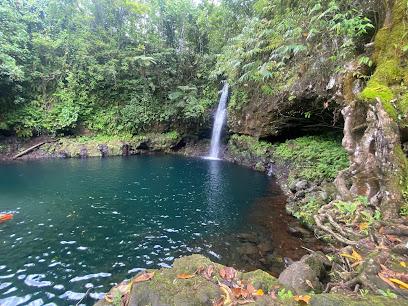
Papaseea Sliding Rocks
Papaseea Sliding Rocks: A thrilling natural attraction in Samoa, perfect for adventure and relaxation amidst stunning landscapes.
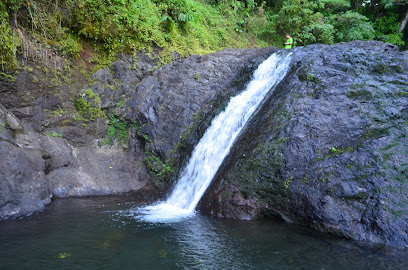
Alofaaga Blowholes
Discover the breathtaking natural wonder of Alofaaga Blowholes in Taga Salega, where the ocean meets volcanic rock in a stunning display of nature.
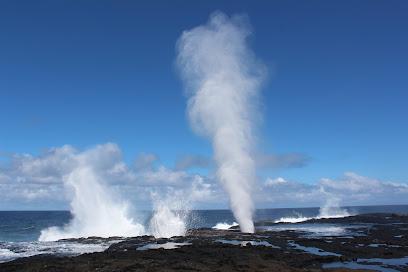
Swimming With Turtles
Experience the magic of swimming with turtles in Sato'alepai's crystal-clear waters, a perfect adventure for nature lovers and ocean enthusiasts.
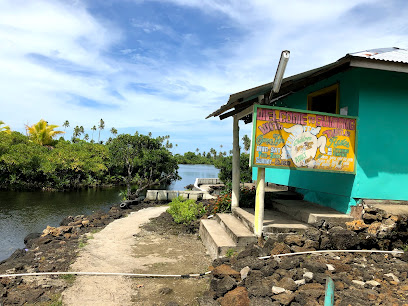
Papapapaitai Falls
Experience the breathtaking beauty of Papapapaitai Falls in Samoa, a stunning natural wonder surrounded by lush tropical rainforest.
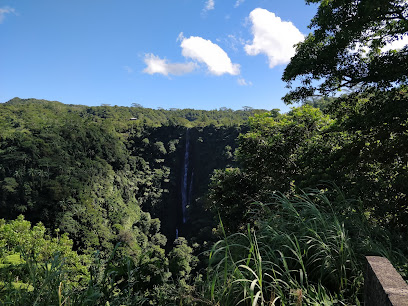
Falealupo Canopy Walkway
Explore the Falealupo Canopy Walkway, where breathtaking views and vibrant wildlife come together in Samoa's lush rainforest.
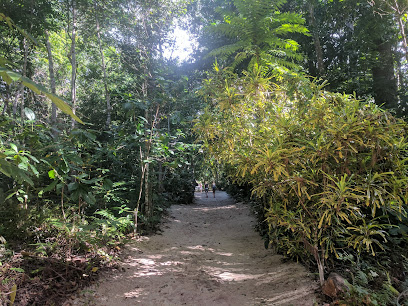
Mu Pagoa Waterfall
Experience the breathtaking beauty of Mu Pagoa Waterfall in Puleia, a must-visit natural attraction surrounded by lush Samoan landscapes.
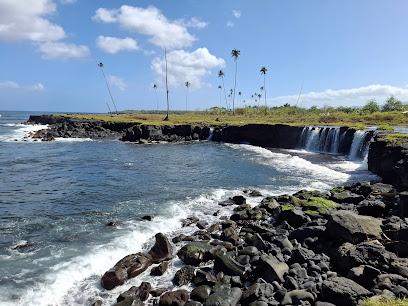
Fiafia Park
Explore Fiafia Park, a vibrant tropical haven in Siusega, where nature and Samoan culture intertwine for an unforgettable experience.
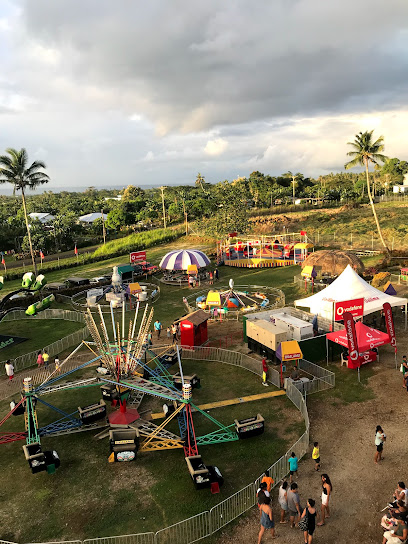
La'auolola lava tube caves
Discover the awe-inspiring La'auolola Lava Tube Caves in A'opo, a must-visit natural attraction showcasing volcanic beauty and adventure.
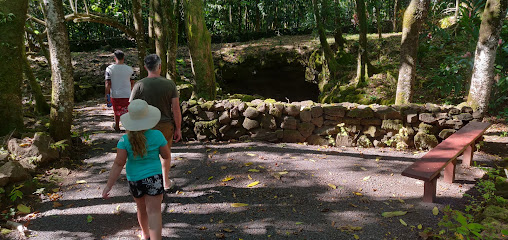
Paia Dwarfs Cave
Explore the mystical Paia Dwarfs Cave, a hidden gem in Savai'i, Matavai, showcasing stunning rock formations and rich Samoan folklore.

Virgins Grave
Explore Virgin's Grave in Samoa, a unique tourist attraction rich in history and surrounded by stunning natural beauty, perfect for history enthusiasts and nature lovers alike.
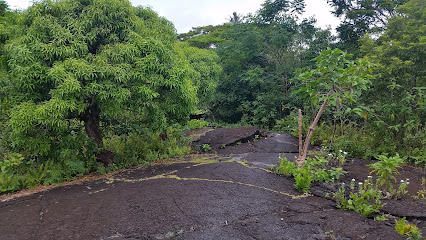
Sinaloa Waterfall
Experience the breathtaking beauty of Sinaloa Waterfall in Palauli, a hidden gem surrounded by lush landscapes and tranquil nature.

Pulemelei Ancient Mound
Explore Pulemelei Ancient Mound, a historical gem in Samoa, offering rich cultural insights and breathtaking natural beauty.
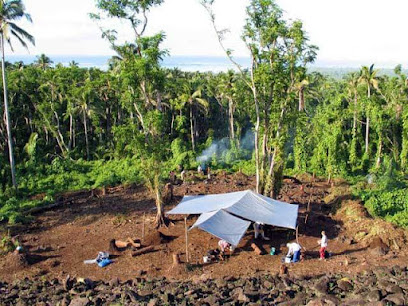
A'opo Forest Reserve and Cave and Forest Toilet
Explore the breathtaking beauty of A'opo Forest Reserve, a serene natural haven in Samoa, perfect for nature lovers and adventure seekers alike.
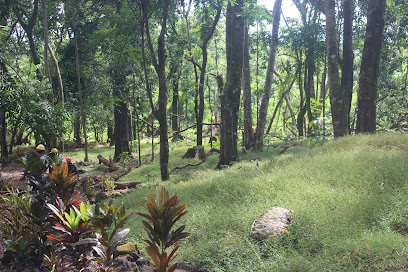
Essential places to dine
Paddles Restaurant
Discover the culinary delights at Paddles Restaurant in Apia - where local flavors meet exquisite dining experiences.
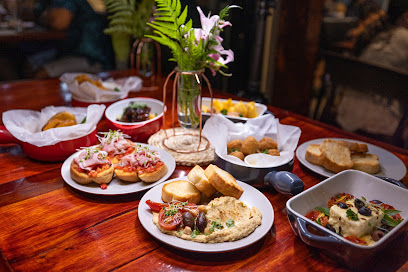
Giordano's Pizzeria // Samoa
Experience authentic Italian flavors at Giordano's Pizzeria in Apia - where every slice tells a story of culinary excellence.
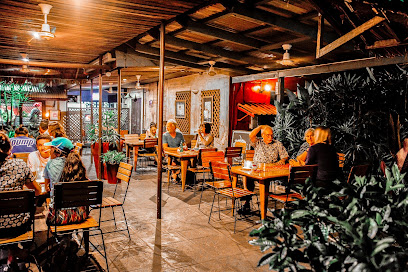
Le Lagoto Resort & Spa
Discover the tropical beauty and luxurious comfort of Le Lagoto Resort & Spa on Savai'i Island, Samoa.
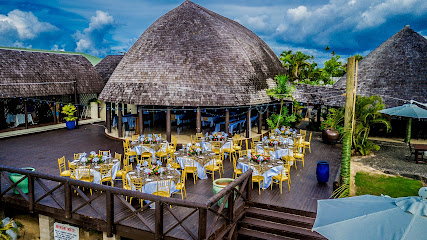
Amoa Resort Savaii
Discover unparalleled relaxation and exquisite dining at Amoa Resort Savaii - your gateway to paradise in Samoa.
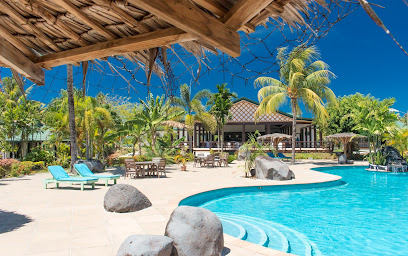
Scalini's Restaurant
Experience authentic Samoan flavors at Scalini's Restaurant in Apia - where every dish tells a story.
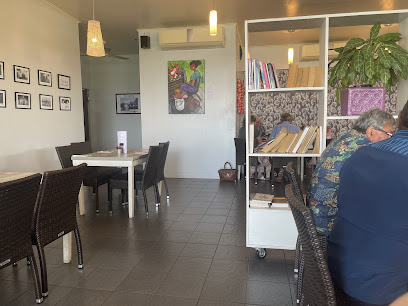
Pinati Restaurant
Experience authentic Samoan flavors at Pinati Restaurant in Apia - where every dish celebrates local heritage and culinary artistry.
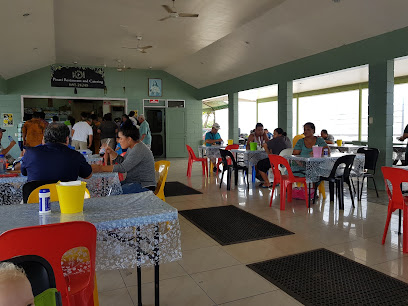
Sails Restaurant & Bar
Discover the culinary delights of Sails Restaurant & Bar in Apia - where local flavors meet stunning ocean views.
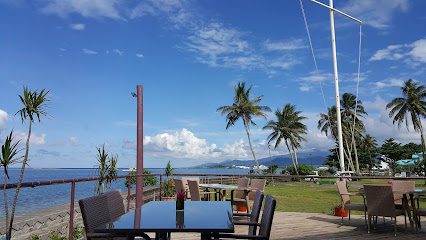
Savaii Lagoon Resort
Experience paradise at Savaii Lagoon Resort: where relaxation meets adventure in stunning Samoa.

Island Grill - Steak & Seafood
Experience exquisite steak and seafood at Island Grill in Apia - where local flavors meet unforgettable ambiance.
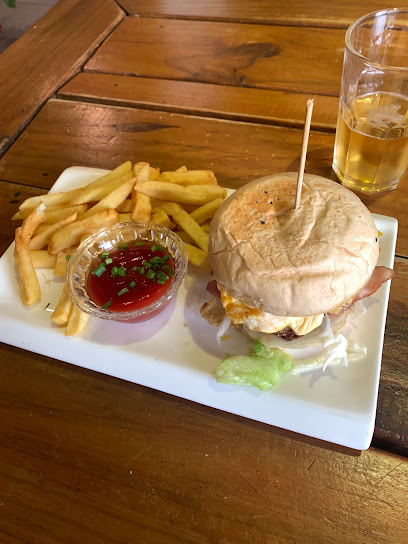
Taumeasina Restaurant & Bar
Experience authentic Samoan cuisine with stunning ocean views at Taumeasina Restaurant & Bar in Apia.
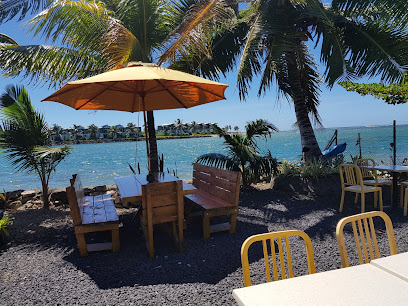
Tandoori Indian Restaurant
Discover authentic Indian flavors at Tandoori Indian Restaurant in Apia - where every dish tells a story.

Lusia's Lagoon Chalets
Discover paradise at Lusia's Lagoon Chalets – your perfect blend of comfort, culinary delights, and tropical adventures on Samoa's South Coast.

Savai'i Harbourside Café & Pizza Bar
Discover Savai'i Harbourside Café & Pizza Bar - where delicious food meets breathtaking views in Salelologa.
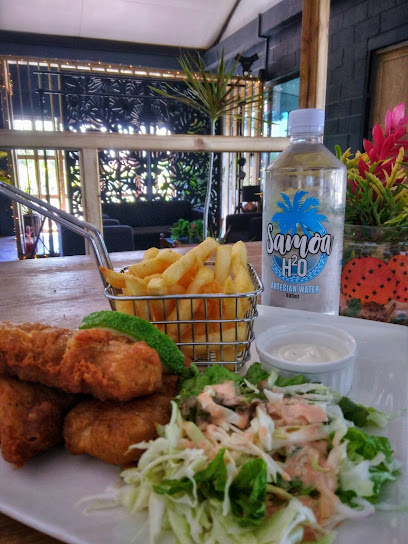
Bella's Kitchen
Experience authentic Samoan flavors at Bella's Kitchen in Apia - where every dish tells a story.
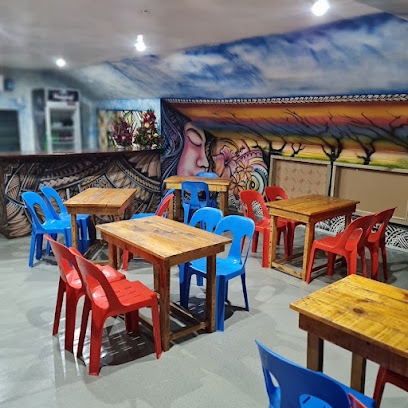
Burger Bills - Vaitele
Experience the vibrant flavors of Samoa at Burger Bills - where gourmet burgers meet island hospitality.
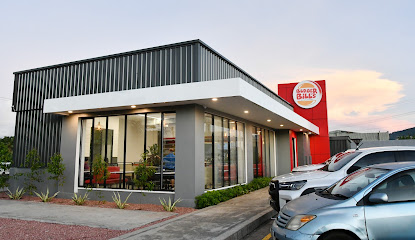
Markets, malls and hidden boutiques
Taefu Taulagi Matafeo Store
Experience the sweetness of Samoa at Taefu Taulagi Matafeo Store, a charming cake shop and café in Asaga offering delightful treats and local flavors.
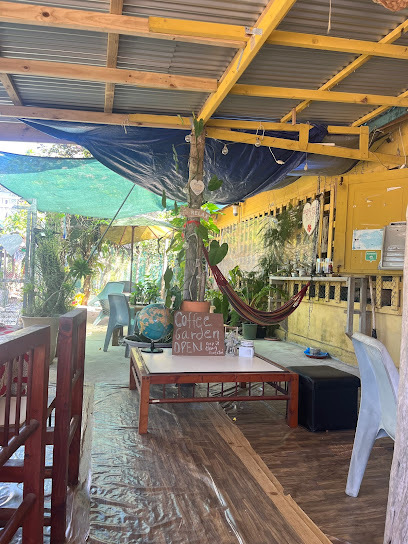
Frankie Supermarket Salelologa
Explore the vibrant culinary scene of Samoa at Frankie Supermarket Salelologa, your gateway to fresh local produce and traditional snacks.
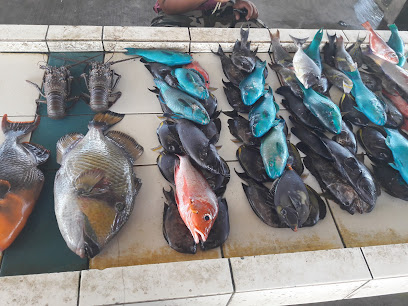
Kirahitto's Convenience Store/ Chicken & Chips
Discover Kirahitto's Convenience Store for delectable baked goods and crispy chicken & chips in Iva, a perfect blend of local flavors and comfort food.
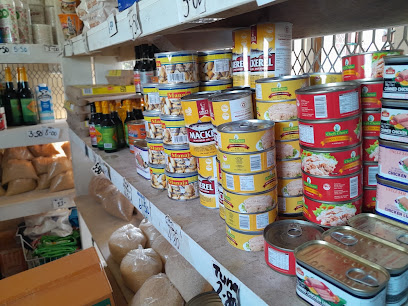
Tiatia KALECS Store
Discover the flavors of Samoa at Tiatia KALECS Store, your go-to supermarket for local products and fresh produce in Salelologa.

Bluebird Lumber and Hardware - Salelologa
Explore Bluebird Lumber and Hardware in Salelologa for local craftsmanship and quality tools during your Samoan adventure.
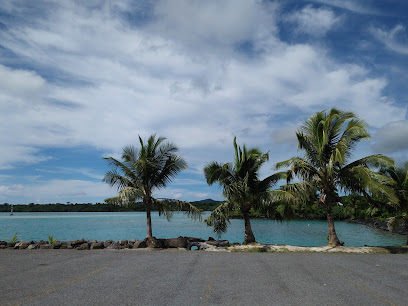
IT Zone savai'i
Explore the latest in technology at IT Zone Savai'i, your premier electronics store in Salelologa, Samoa.
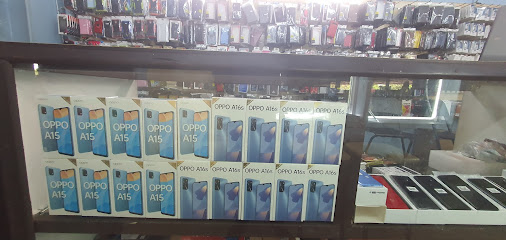
Tofilau Tauvaga & Silia's Store
Discover local flavors and essentials at Tofilau Tauvaga & Silia's Store, a convenient stop for travelers in Iva, Samoa.

Faletaulupe Malupo Taufao’s Shop
Explore authentic Samoan handicrafts and traditional goods at Faletaulupe Malupo Taufao’s Shop in Vailoa, a cultural gem for every traveler.
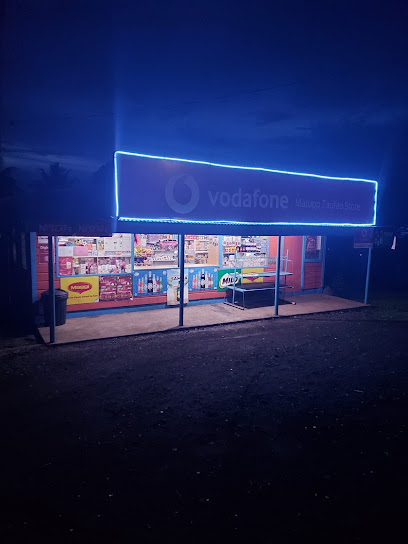
XINFANG MART
Experience local flavors and culture at Xinfang Mart, a charming grocery store on S Coast Rd, where everyday essentials meet Samoan hospitality.

No.1 shop
Discover the rich flavors and crafts of Samoa at No.1 Shop, your go-to grocery store in Salelologa, blending local culture with everyday shopping.
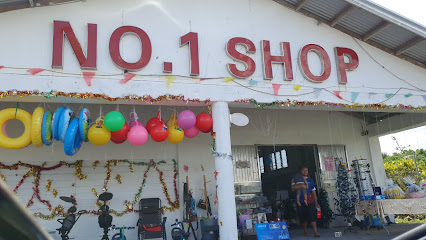
SMI Hardware
Discover SMI Hardware in Salelologa - your ultimate destination for tools, materials, and expert advice for all your DIY projects.

COST LESS MART
Discover unbeatable prices and friendly service at Cost Less Mart, your ultimate grocery destination in the South Coast.

Supermarket + food
Explore the vibrant supermarket in Satupaitea for authentic local flavors, fresh ingredients, and a taste of everyday life in this charming village.

Mustaste Cafeteria
Experience authentic Samoan cuisine at Mustaste Cafeteria, a charming spot in Papa Palaui le Falefa that delights with local flavors and warm hospitality.
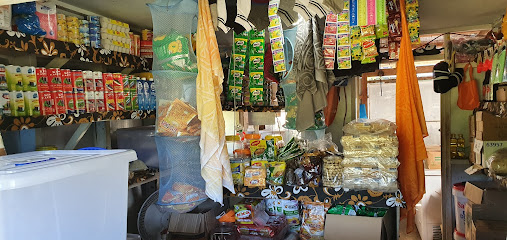
Genedyva's Store Faleolo
Discover Genedyva's Store Faleolo, your go-to convenience store for local goods and essentials while exploring the stunning landscapes of Samoa.

Essential bars & hidden hideouts
Le Lagoto Resort & Spa
Experience the ultimate tropical getaway at Le Lagoto Resort & Spa, where luxury meets the serene beauty of Savai'i's breathtaking shores.
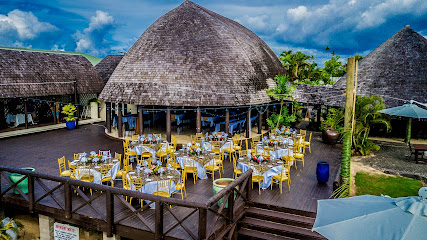
Amoa Resort Savaii
Experience the serene beauty and vibrant culture of Samoa at Amoa Resort Savaii, your perfect tropical retreat.
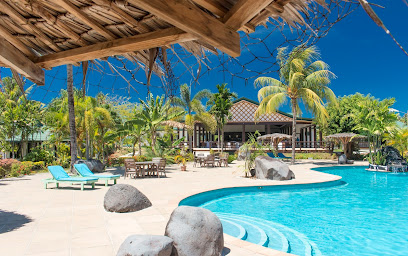
Savai'i
Experience the unparalleled natural beauty and rich cultural heritage of Savai'i, Samoa's largest island, perfect for relaxation and adventure.
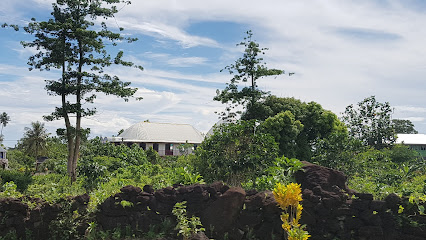
Savai'i Harbourside Café & Pizza Bar
Experience the flavors of Samoa at Savai'i Harbourside Café & Pizza Bar, where delicious pizzas meet breathtaking ocean views.
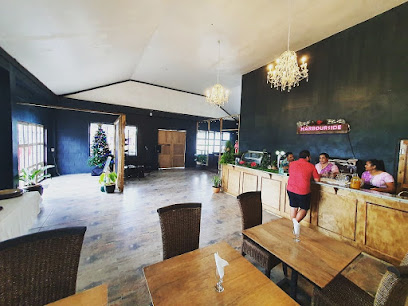
Barefoot Bar and Restaurant
Savor delicious local and international cuisine in a tropical paradise at Barefoot Bar and Restaurant, overlooking the stunning Pacific Ocean.
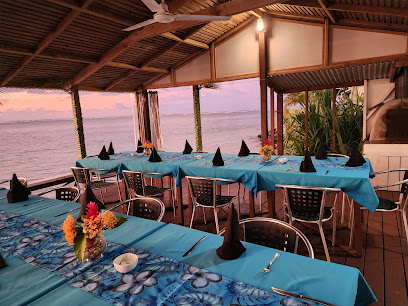
Salvation & Grace
Experience the authentic flavors of Safune at Salvation & Grace, a restaurant that captures the essence of local cuisine in a warm and inviting atmosphere.
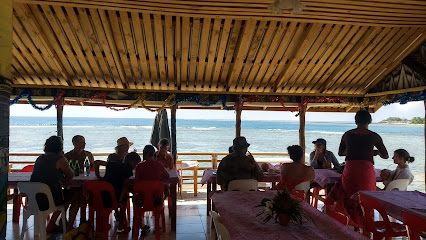
DMC
Experience the authentic flavors of Samoa at DMC in Salelologa, where culinary traditions meet modern dining.

RTV
Experience the rich flavors of Samoa at RTV, a family-friendly restaurant in Salelologa, perfect for tourists looking to enjoy local cuisine.
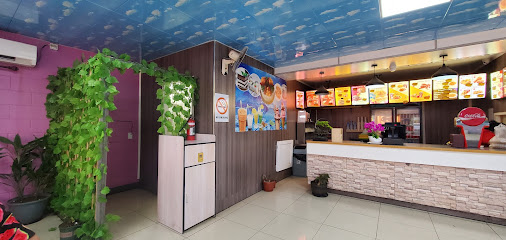
Coconuts
Discover Coconuts in Fagamalo for a delightful pizza experience in a tropical paradise, blending local ingredients with classic Italian flavors.

Papa's Pizza Salelologa
Experience the authentic taste of Samoa at Papa's Pizza in Salelologa, where every slice tells a flavorful story.
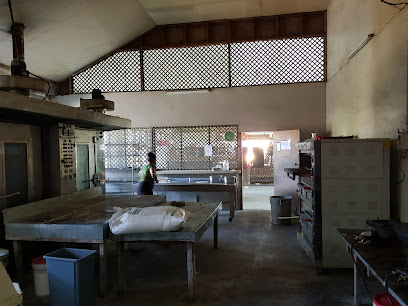
Ieu and Winnie's Islands View Motel
Discover tranquility and taste at Ieu and Winnie's Islands View Motel, the perfect blend of comfort and local flavors in Salelologa, Samoa.
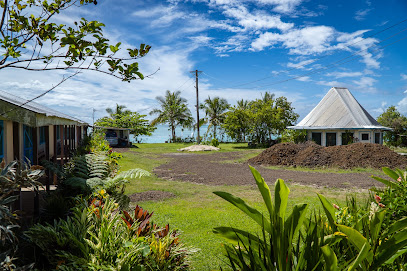
Dynasty Restaurant & Dynasty Cakery (Catering/Cakery)
Discover the delightful flavors of Samoa at Dynasty Restaurant & Dynasty Cakery, where tradition meets modern taste in every bite.
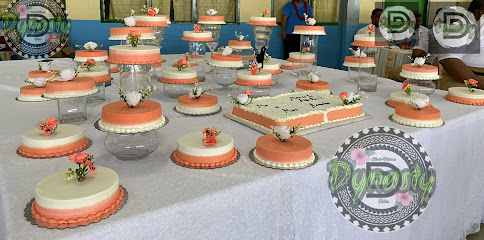
Tepatasi - Restaurant
Discover the authentic flavors of Samoa at Tepatasi Restaurant in Salelologa, where fresh ingredients meet traditional culinary artistry.
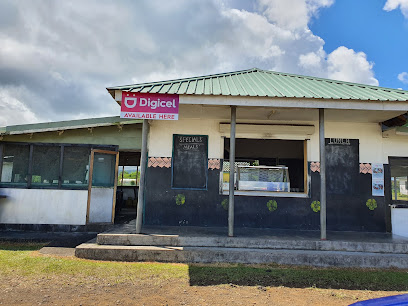
Loui's restaurant
Experience the authentic taste of Samoa at Loui's Restaurant, where local flavors and warm hospitality come together in Salelologa.
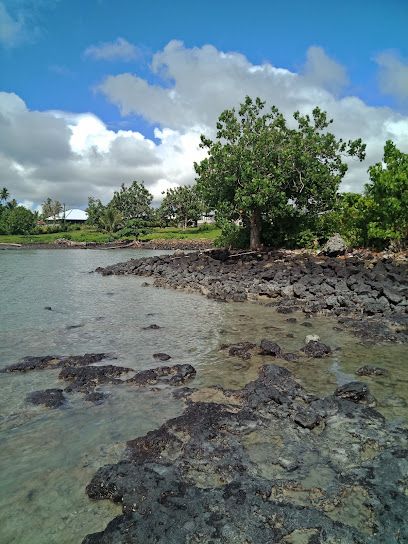
Lesogaimiti Restaurant
Experience the authentic flavors of Samoa at Lesogaimiti Restaurant in Lalomalava, where every dish is a celebration of local culinary traditions.
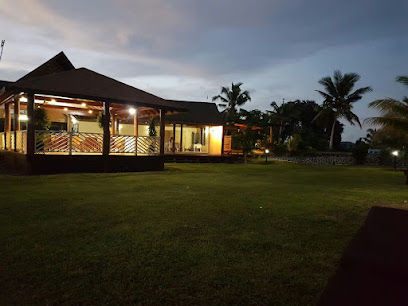
Local Phrases
-
- HelloTalofa
[Tah-loh-fah] - GoodbyeFa
[Fah] - YesIoe
[Ee-oh-eh] - NoLeai
[Leh-ai] - Please/You're welcomeFa'amalie
[Fah-ah-mah-lee-eh] - Thank youFa'afetai
[Fah-ah-fey-tie] - Excuse me/SorryTulou
[Too-loh-oo] - How are you?O a mai oe?
[Oh-ah-mah-ee-oh-eh] - Fine. And you?Lelei. O a oe?
[Leh-leh-ee. Oh-ah-oh-eh] - Do you speak English?E te lelei ona fai le fa'ailoa?
[Eh teh-leh-leh-ee oh-nah-fie leh-fah-ee-low-ah] - I don't understandE le mafai ona malamalama
[Eh leh-mah-fai-oh-nah-mah-lah-mah-lah-mah]
- HelloTalofa
-
- I'd like to see the menu, pleaseE fia vaai le tusi 'aina, fa'amalie
[Eh fee-ah-vah-eye-leh-too-see-eye-ai-nah-fah-ah-mah-lee-eh] - I don't eat meatE le auai ai pisupo
[Eh leh-ow-eye-eye-pisoo-poh] - Cheers!Manuia!
[Mah-noo-ee-ah] - I would like to pay, pleaseE fia tausaga, fa'amalie
[Eh fee-ah-tow-sah-ngah-fah-ah-mah-lee-eh]
- I'd like to see the menu, pleaseE fia vaai le tusi 'aina, fa'amalie
-
- Help!Tulou!
[Too-loh-oo] - Go away!Alu i le mālō
[Ah-loo-ee-leh-mah-low] - Call the Police!Fa'afeso leoleo!
[Fah-ah-fey-soh-leh-oh-leh-oh] - Call a doctor!Fa'afeso foma'i!
[Fah-ah-fey-soh-foh-mah-ee] - I'm lostUa ou te lētē
[Oo-ah-oh-teh-leh-teh] - I'm illOu te mālō
[Oh-teh-mah-low]
- Help!Tulou!
-
- I'd like to buy...E fia fa'atau...
[Eh fee-ah-fah-ah-tow] - I'm just lookingOu te va'ai atu
[Oh-teh-vah-eye-ah-too] - How much is it?E fia fa'apea?
[Eh fee-ah-fah-ah-peh-ah] - That's too expensiveO lelei lava
[Oh-leh-leh-ee-lah-vah] - Can you lower the price?E mafai ona fa'ataga le totogi?
[Eh mah-fai-oh-nah-fah-ah-tah-ngah-leh-toh-toh-ngi]
- I'd like to buy...E fia fa'atau...
-
- What time is it?O le taimi e?
[Oh-leh-tie-mee-eh] - It's one o'clockO le tasi i le tinitonu
[Oh-leh-tah-see-ee-leh-tee-knee-toh-noo] - Half past (10)I le itula i le sefulu
[Ee-leh-ee-too-lah-ee-leh-seh-foo-loo] - MorningTaeao
[Tie-ah-ow] - AfternoonAfiafi
[Ah-fee-ah-fee] - EveningIli
[Ee-lee] - YesterdayNa
[Nah] - TodayNei
[Neh-ee] - TomorrowAso
[Ah-so] - 1Tasi
[Tah-see] - 2Lua
[Loo-ah] - 3Tolu
[Toh-loo] - 4Fa
[Fah] - 5Lima
[Lee-mah] - 6Ono
[Oh-no] - 7Fitu
[Fee-too] - 8Valu
[Vah-loo] - 9Iva
[Ee-vah] - 10Sefulu
[Seh-foo-loo]
- What time is it?O le taimi e?
-
- Where's a/the...?O fea le...?
[Oh-feh-ah-leh] - What's the address?O le tusitusiga
[Oh-leh-too-see-too-see-ngah] - Can you show me (on the map)?E mafai ona fa'ailoa mai (i le mapa)?
[Eh mah-fai-oh-nah-fah-eye-low-ah-mah-ee-ee-leh-mah-pah] - When's the next (bus)?O le a toeititi (autalavou)?
[Oh-leh-ah-toh-eh-tee-tee-ah-ow-tah-lah-vow] - A ticket (to ....)Tiketi (i le ....)
[Tee-keh-tee-ee-leh]
- Where's a/the...?O fea le...?
History of Savai'i
-
Savai'i, the largest island in Samoa, was settled by Polynesians over 3,000 years ago. The early settlers brought with them their rich culture, traditions, and navigational skills. Archaeological evidence, such as ancient stone platforms and tools, suggests a sophisticated society that thrived on agriculture, fishing, and inter-island trade.
-
In the early 19th century, European missionaries, particularly from the London Missionary Society, arrived in Savai'i. They played a significant role in converting the local population to Christianity. The missionary John Williams was notable for his efforts in spreading the Christian faith across the island. These missions had a profound impact on the social structure and cultural practices of the Samoan people.
-
Savai'i, along with the rest of Samoa, was subjected to colonial rule by various powers, including Germany and New Zealand. The German period (1900-1914) saw the introduction of commercial plantations, particularly for copra and cocoa. Following World War I, New Zealand administered Savai'i under a League of Nations mandate until Samoa gained independence in 1962.
-
The Mau movement was a significant non-violent resistance campaign against colonial rule in Samoa. Savai'i was a stronghold of this movement, which aimed to achieve Samoan independence. Leaders like Lauaki Namulauulu Mamoe played essential roles in mobilizing the people. The movement's influence was pivotal in eventually securing Samoa's independence.
-
Between 1905 and 1911, Mount Matavanu erupted, dramatically altering the landscape of Savai'i. Lava flows destroyed several villages and created new landforms. The eruptions had a profound impact on the island's ecology and the lives of its inhabitants, who had to rebuild their communities in the aftermath.
-
The culture of Savai'i is deeply rooted in the principles of Fa'a Samoa, or the Samoan way. This traditional lifestyle emphasizes community, respect, and familial ties. Key cultural practices include the 'ava ceremony, traditional tattooing (tatau), and the matai system of chiefly titles. Festivals, dance, and music are integral parts of Savai'i's cultural expression.
Savai'i Essentials
-
Savai'i is the largest island in Samoa. The main gateway to Savai'i is through the Faleolo International Airport on the nearby island of Upolu. From there, you can take a taxi or bus to the Mulifanua Wharf, where ferries regularly operate to Salelologa Wharf on Savai'i. The ferry ride takes approximately 1-2 hours. It is advisable to check the ferry schedule in advance, as services can vary.
-
Once on Savai'i, transportation options include taxis, buses, and rental cars. Taxis are available at the main ferry terminal and in larger villages. Buses are the most economical option and run on a set schedule, though they can be less frequent in remote areas. Renting a car provides the most flexibility for exploring the island at your own pace, and several rental agencies operate on Savai'i.
-
The official currency of Samoa is the Samoan Tala (WST). Credit cards are accepted in most hotels, restaurants, and tourist shops, but it is advisable to carry cash for small purchases and in rural areas. ATMs are available in Salelologa and other larger villages. Ensure you have enough cash before traveling to more remote parts of the island.
-
Savai'i is generally a safe destination for tourists. However, it is always wise to take standard precautions. Avoid walking alone at night in unfamiliar areas and keep your belongings secure. While crime rates are low, petty theft can occur. Be respectful of local customs and traditions to avoid any misunderstandings.
-
In case of an emergency, dial 911 for immediate assistance. The main hospital on Savai'i is located in Tuasivi, near Salelologa, and provides medical services. It is recommended to have travel insurance that covers medical emergencies. For minor health issues, pharmacies are available in larger villages.
-
Fashion: Do dress modestly, especially when visiting villages and religious sites. Avoid wearing revealing clothing. Religion: Do respect local customs and traditions. Always ask for permission before entering a church and dress appropriately. Public Transport: Do be respectful and patient, as buses can be crowded and may not run on a strict schedule. Greetings: Do greet people with a smile and a friendly 'Talofa' (hello). Eating & Drinking: Do try local dishes and accept food offerings graciously. Don't waste food, as it is considered disrespectful.
-
To experience Savai'i like a local, visit the island's markets, such as the Salelologa Market, where you can buy fresh produce and traditional Samoan crafts. Engage with locals, as they are often friendly and willing to share stories about the island's culture and history. Don't miss visiting the Afu Aau Waterfall and the Alofaaga Blowholes for stunning natural beauty. For a unique experience, attend a fiafia night, featuring traditional Samoan dance and music.
Trending Landmark in Savai'i
-
Le Lagoto Resort & Spa
-
Afu Aau Waterfalls
-
Amoa Resort Savaii
-
Alofaaga Blowholes
-
Lauiula Beach Fales
-
Savaii Lagoon Resort
-
Swimming With Turtles
-
Va-i-moana Seaside Lodge
-
Dive Savaii
-
Savai'i Harbourside Café & Pizza Bar
-
Florence's Place
-
Jet Over Hotel
-
Salelologa Wharf
-
Cape Fatuosofia
-
Mu Pagoa Waterfall
Nearby Cities to Savai'i
-
Things To Do in Salelologa
-
Things To Do in Manase
-
Things To Do in Fagamalo
-
Things To Do in Asau
-
Things To Do in Falealupo
-
Things To Do in Mulifanua
-
Things To Do in Apia
-
Things To Do in Lalomanu
-
Things To Do in Leone
-
Things To Do in Tafuna
-
Things To Do in Pago Pago
-
Things To Do in Fagatogo
-
Things To Do in Aua
-
Things To Do in Ha'ano
-
Things To Do in Pangai










